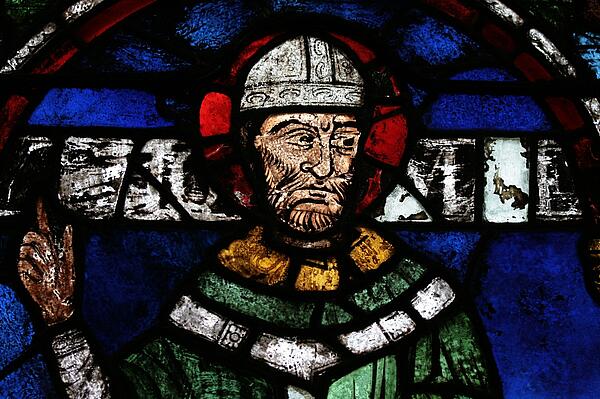Archbishop of Canterbury: Thomas Becket
The death of Thomas Becket, Archbishop of Canterbury, in 1170 is one of the stories most associated with Medieval England.
In the Medieval period, the Church had a huge amount of power over the population of England as they desperately attempted to avoid an eternity in Hell. Throughout this time the Catholic Church led by the Pope in Rome, insisted that they were the only channel through which souls could be saved and transferred to Heaven. As a result, the population of England considered the Archbishop of Canterbury to be the church’s most significant position and he often worked alongside the king.
Despite working with the Archbishop, English kings had little power over the pope and could not remove him from his position. However, it was possible for a pope to remove a king via excommunication, where they would state that the king could be disobeyed as his soul had been condemned to Hell.
For the most part, the population of England did not have to choose between their king or the pope, as they frequently worked together. However, there were two occasions where these usually united figures disagreed - in the cases of Thomas Becket and Henry VIII.

Thomas Becket was appointed Archbishop of Canterbury, England’s highest religious position, in 1162 under the reign of Henry II. His appointment came as little surprise as the two were known to be close friends, sharing pastimes including hunting, riding and playing jokes.
As the great-grandson of William the Conqueror, Henry II inherited his territories in France and would often leave Becket to oversee the country while he was overseas. These new responsibilities led to Henry announcing that Becket would become his chancellor, making him the highest ranking person in England aside from the king himself.
After the current Archbishop of Canterbury passed away in 1162, Henry decided to take the opportunity to promote his friend even further and offered him to important position. This act was not entirely selfless and Henry hoped it would allow him more input in the way the church punished offenders.
Specifically, Henry resented the fact that any members of the church had a right to be tried in a court of the church rather than a royal court. Royal punishments were notoriously worse than those of a church court, often sending criminals on pilgrimages rather than imposing more traditional punishments. Concerned that England was not lawful enough, Henry aimed to change this, and believed Becket to be the key.
Initially Thomas Becket tried to turn down the role of Archbishop, suggested to Henry that he already had enough power and arguing that it would affect their friendship. However, the king’s insistence that Becket take the role eventually won over his friend.
Becket took his position seriously, reverting from a life of luxury to a more conservative life of bread and water, sleeping on the floor and giving away his expensive food to the poor. This change in Becket looked set to split the pair in 1164, when Henry declared a law that those found guilty in a church court would face a royal court punishment. Thomas Becket refused to implement this law and escaped overseas, avoiding the wrath of his bad tempered friend.
After six years Becket felt comfortable enough to return to England, but it wasn’t long before they began arguing once more. Becket made the decision to request that the Archbishop of York be excommunicated due to his close allegiance with the king, a serious request that prompted Henry II to exclaim “will no one ride me of this troublesome priest?”
Upon overhearing this, four knights called Reginald FitzUrse, William de Tracy, Hugh de Morville and Richard le Breton decided the king wanted Becket dead, and rode out to Canterbury in search of him. Once the deed was done, one of the knights is believed to have said: “Let us away. He will rise no more.”
Becket was killed in Canterbury Cathedral on 29 December 1170. Shortly after his death was discovered, locals began to visit the spot of his death where they dipped strips of his cloths in his blood in the belief that it would protect them from evil.
After the pope declared Becket a saint, the site quickly became a pilgrimage destination and Henry II himself began a barefoot journey to the Cathedral. In a bid to gain forgiveness from the pope, Henry prayed at the spot where Becket fell while being whipped by monks.
The area soon became a shrine to Becket, with locals leaving their valuables and believing they would be cured of sickness if they visited. The shrined remained secret until the monasteries and churches were closed by Henry VIII, when the valuables were eventually removed. It took a total of 21 carts to remove all of the valuables left for Thomas Becket at the site of his death in Canterbury Cathedral.
See also: Henry VIII
MLA Citation/Reference
"Archbishop of Canterbury: Thomas Becket". HistoryLearning.com. 2025. Web.
Key facts
| Name: | Thomas Becket |
| Birth Date: | 21 December 1118 or 1120 |
| Death: | 29 December 1170 |
| Buried: | Canterbury Cathedral |
| Key role: | Archbishop of Canterbury between 1162 - 1170 |
| Previous post: | Archdeacon of Canterbury |
